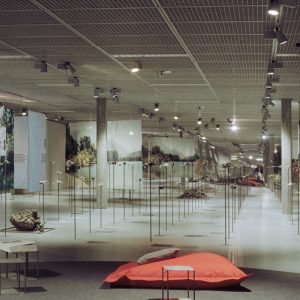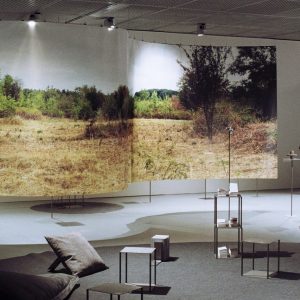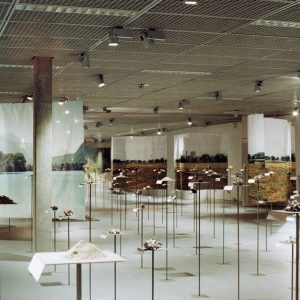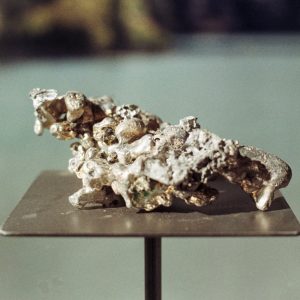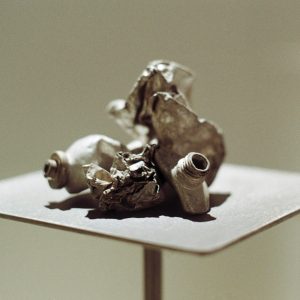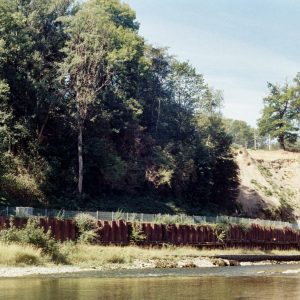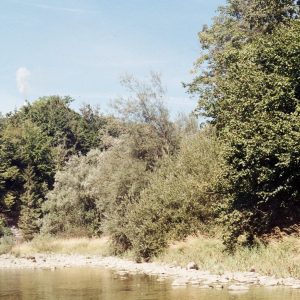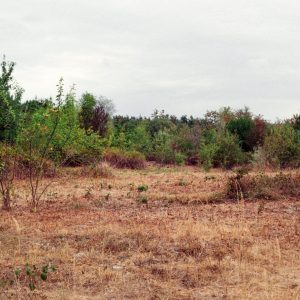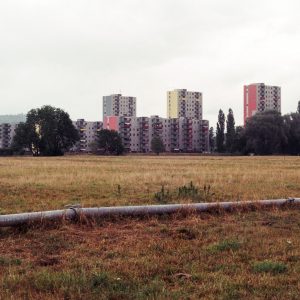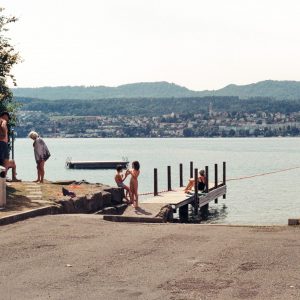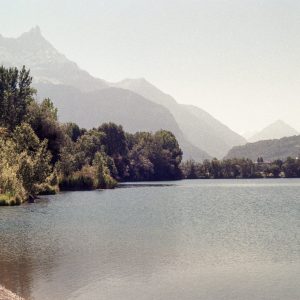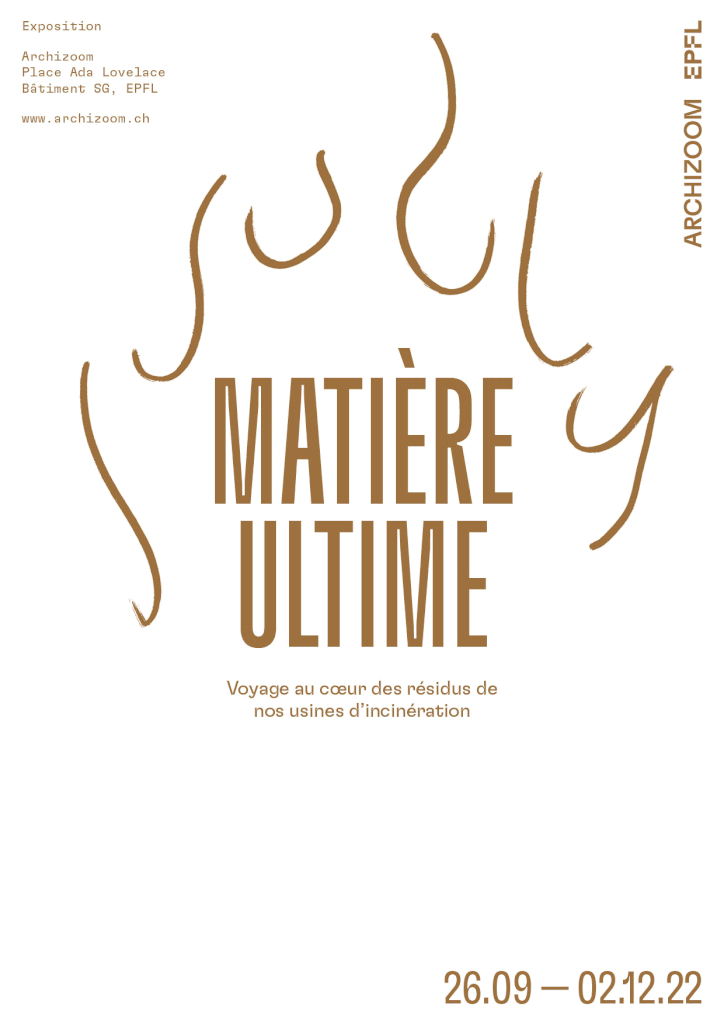
ULTIMATE MATTER
From 26.09 to 02.12.22
Archizoom, SG building, EPFL
After recycling and incineration, the residues of our consumer goods become a material that seems to come from another planet. They form the archipelago of a new geological stratum. Before future civilizations find the sedimentary stratum of the Anthropocene, can this slag from high furnaces inform us about the impact of our lifestyles on the territory?
Exhibition commissioned by Raum404: Lucile Ado, Oscar Buson and Archizoom : Solène Hoffmann, Cyril Veillon.
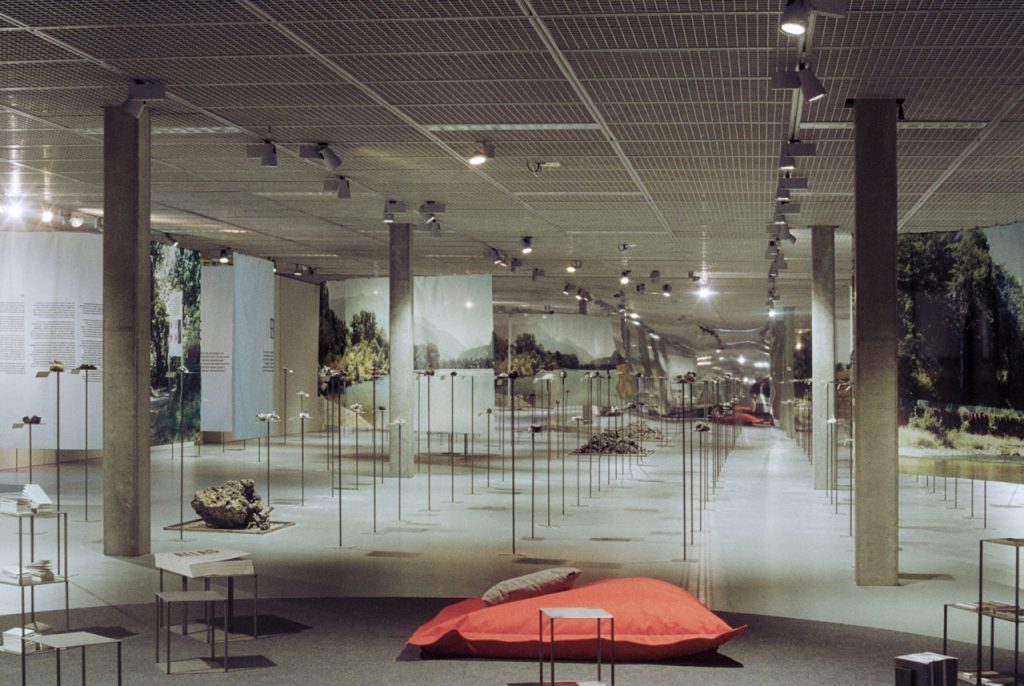
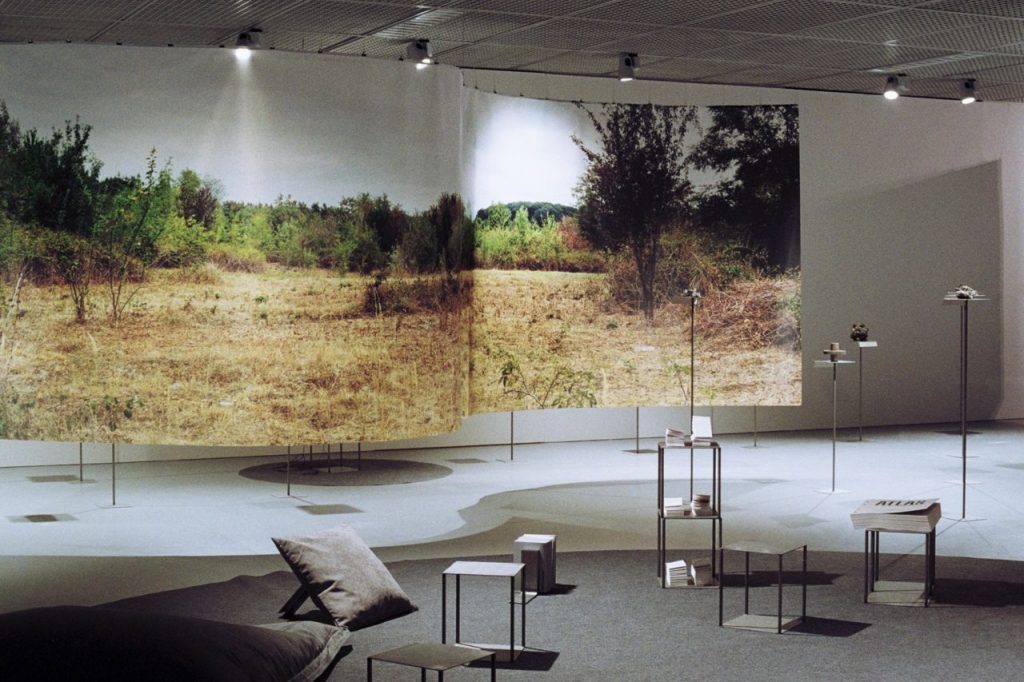
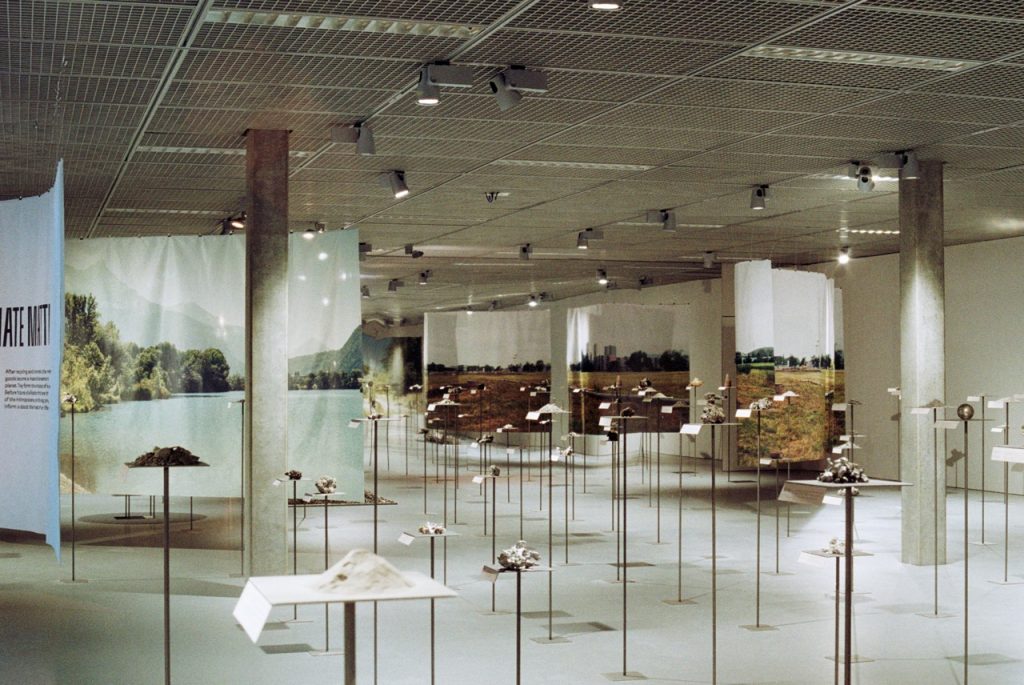
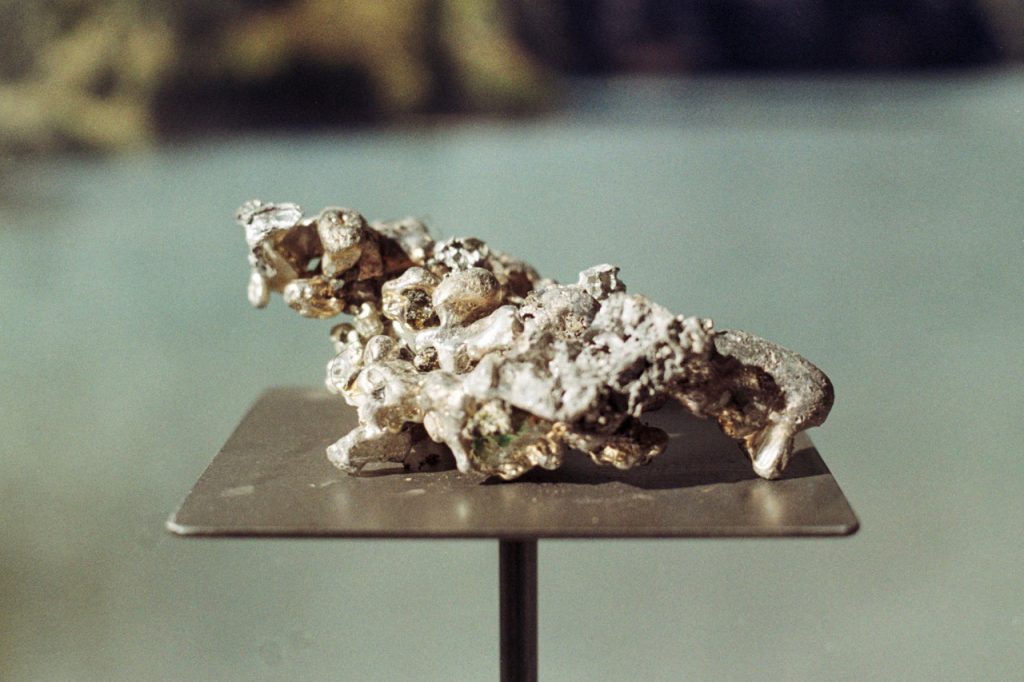
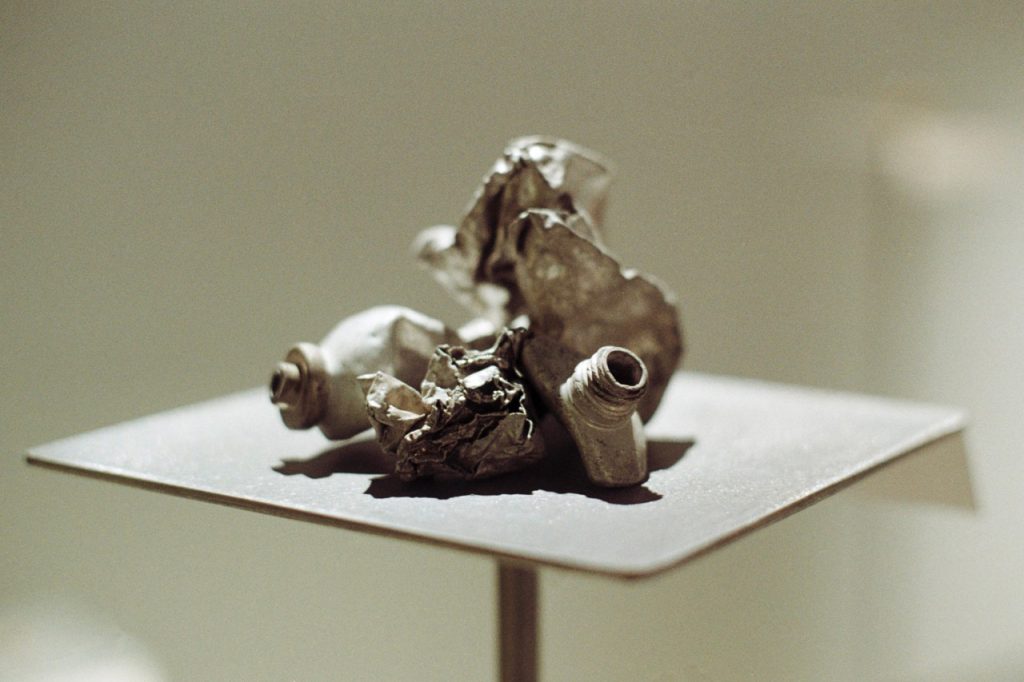
EVENTS
Museum Night Saturday 24 September, 2 p.m. – midnight
Guided tours, (30’) 3.30 p.m, 7.30 p.m., 9.30 p.m.
Animation Tridel Metamorphosed, continuous
Opening Monday 26 September 2022, 6 p.m.
With Raum404: Oscar Buson, Lucile Ado, in French
Lecture Monday 10 October 2022, 12.15 p.m.
Demolition as an exception?
Lecture by the collective Countdown 2030
Guided tour Monday 24 October 2022, 5 p.m.
With Raum404, in French
On registration
Round Table Monday 24 October 2022, 6.30 p.m.
Urban Bricolage? (1), Reuse: from teaching to practice
Moderated by Corentin Fivet, in French
Guided tour Monday 14 November 2022, 5 p.m.
With Raum404, in English
On registration
Round Table Monday14 November 2022, 6.30 p.m.
Urban Bricolage? (2), Which processes and technologies for reuse?
Moderated by Martin Fröhlich, in English
Architecture and Cinema Tuesday 22 November 2022, 18h30
Former Eldorado cinema, Maison du peuple, Lausanne
Fabrication and narration of matter, with Véronique Patteeuw & Benoît Rossel. Projection of the short film Le Chant du styrène directed by Alain Resnais (1958) and an excerpt from the film Koyaanisqatsi directed by Godfrey Reggio (1983), followed by a discussion between the speakers and an aperitif. Moderated by Romain Barth
Lecture 28 November 2022, 6.30 p.m.
Moratorium on new construction, by Charlotte Malterre-Barthes
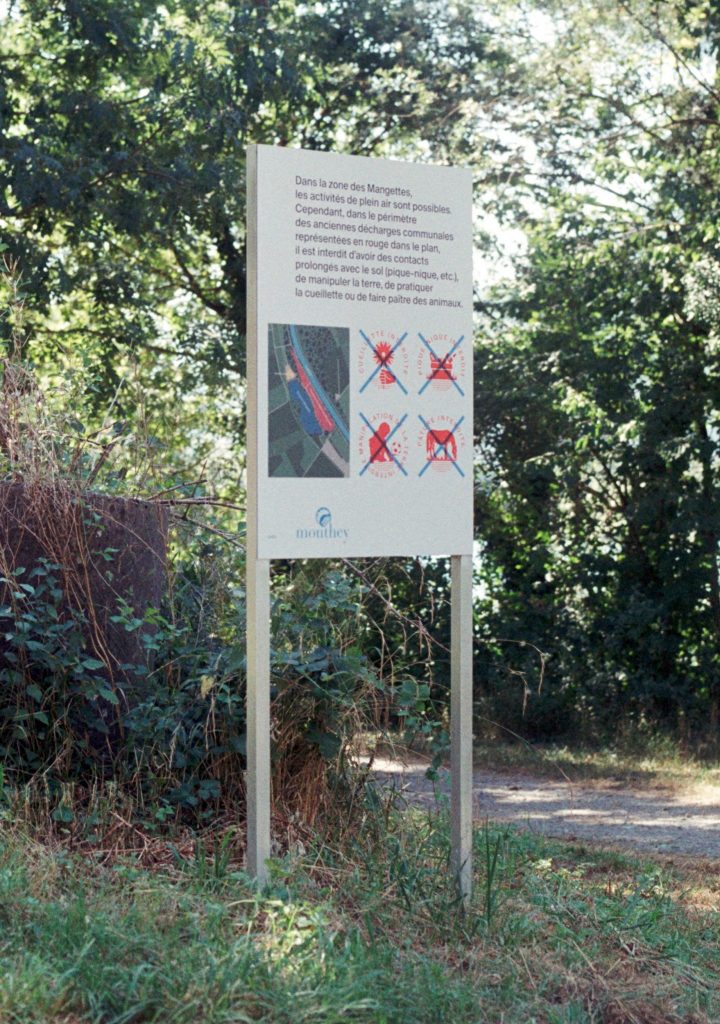
Photo © Solène Hoffmann
INTRODUCTION
From the blast furnaces of incineration plants emerge objects that seem to come from another planet. This is the bottom ash, the residue of our consumer goods, called “monsters” by the workers at the Bois de Bay plant near Geneva.
Once the recycling process is complete, household waste materials can still be broken down and economically valued. Yet, from these various operations, massive volumes of incinerated material remain: hieratic objects, conglomerates or fine dust. This Ultimate Material returns to earth, abandoned under plastic tarps.
To produce the objects and constructions that surround us, raw material must be extracted, transformed and displaced. These operations consume energy at each step. When they become obsolete, our objects are transported again, then recycled and degraded in the best of times. At the very end of this cycle, the energy contained in the materials can be released by combustion and redistributed in the local heating networks. Waste is therefore highly valued and metabolised in the functioning of our cities and societies. It is an inconspicuous, though major, component of urban organisation.
To observe the ultimate stage of matter means becoming aware of the impossibility of perfect recycling and infinite reuse of matter. It is to understand its incessant growth, its flows and its territorial impact.
As a reaction to the global metropolization, the Italian group Archizoom Associati designed in 1969 a critical utopia: a mirror of the contemporary state of the homogeneous urbanization of cities and countrysides. They project a new way of life on a totally anthropized territory, without limits, the No-stop City.
The exhibition’s scenography takes up this principle of a homogeneous landscape in perpetual expansion. A taxonomy of slag lines the exhibition space: the pieces gravitate there, classified according to their respective degrees of transformation. This material is visualized on the Swiss landscape by a cartography of its spatial impact and by photographs of burial sites.
This strategy of excess brings to the surface the archipelago of a new and very real geological stratum. If future civilizations will be able to find there the palimpsest sedimentary layer of the Anthropocene, it seems necessary to us to show this matter to better represent the physical impact of our ways of life on the ground and our environment. This consciousness is, in our view, an essential condition of the design, which can no longer be overlooked on the 50th anniversary of the publication of The Limits To Growth by the Club of Rome.
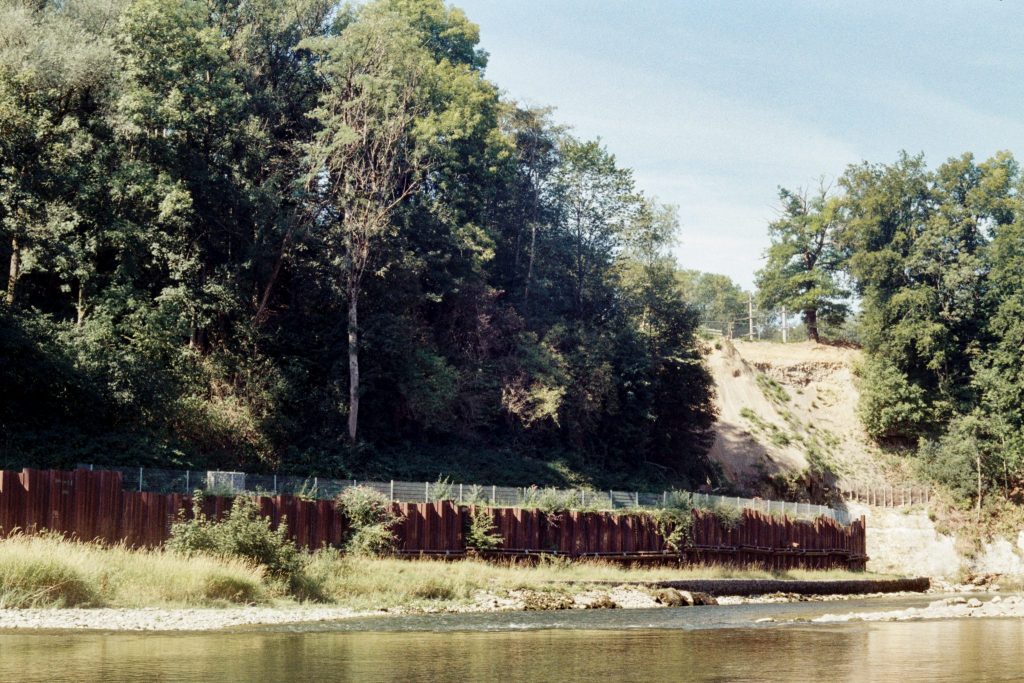
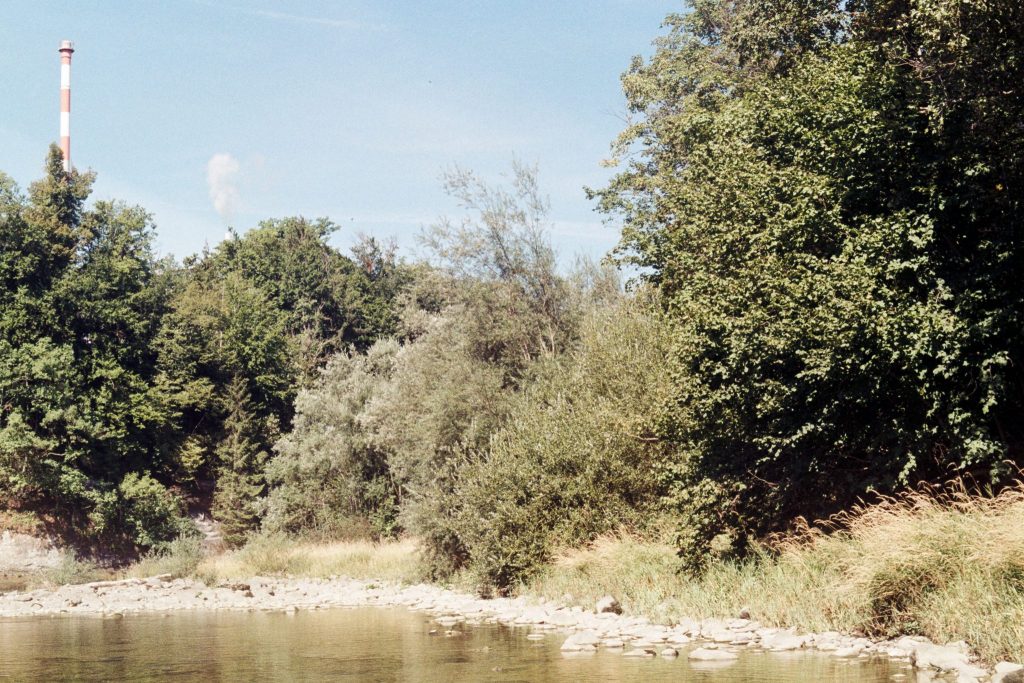
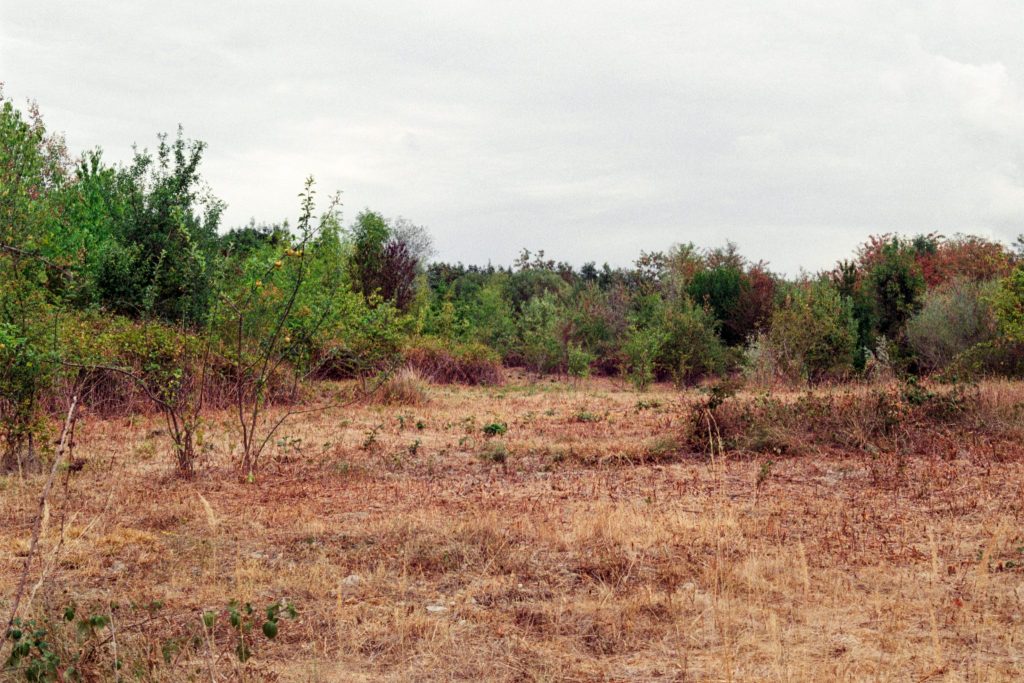
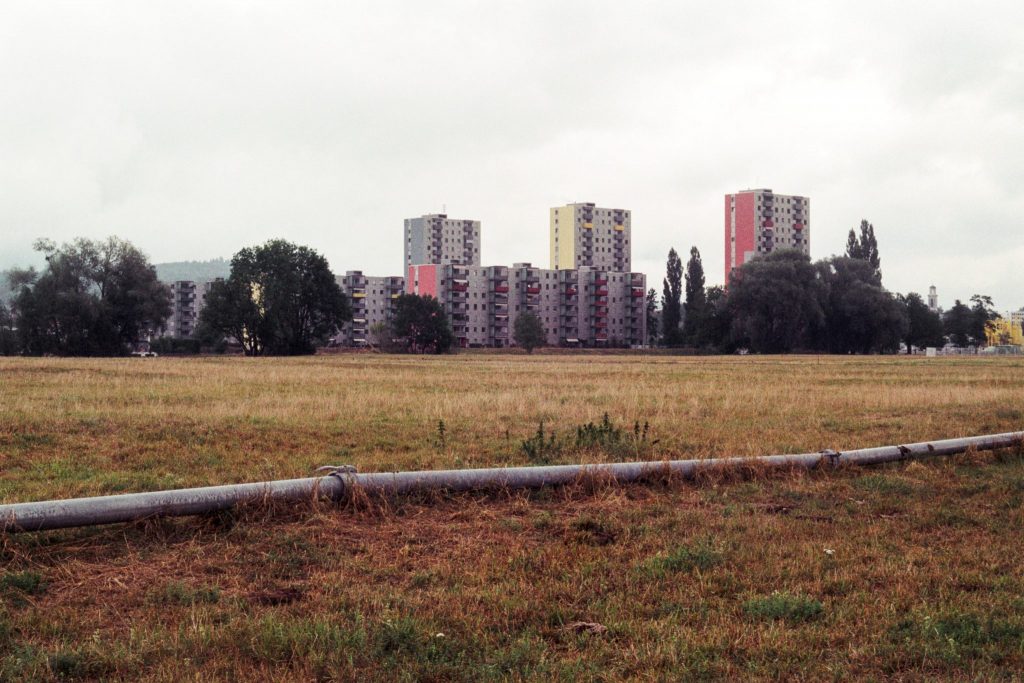
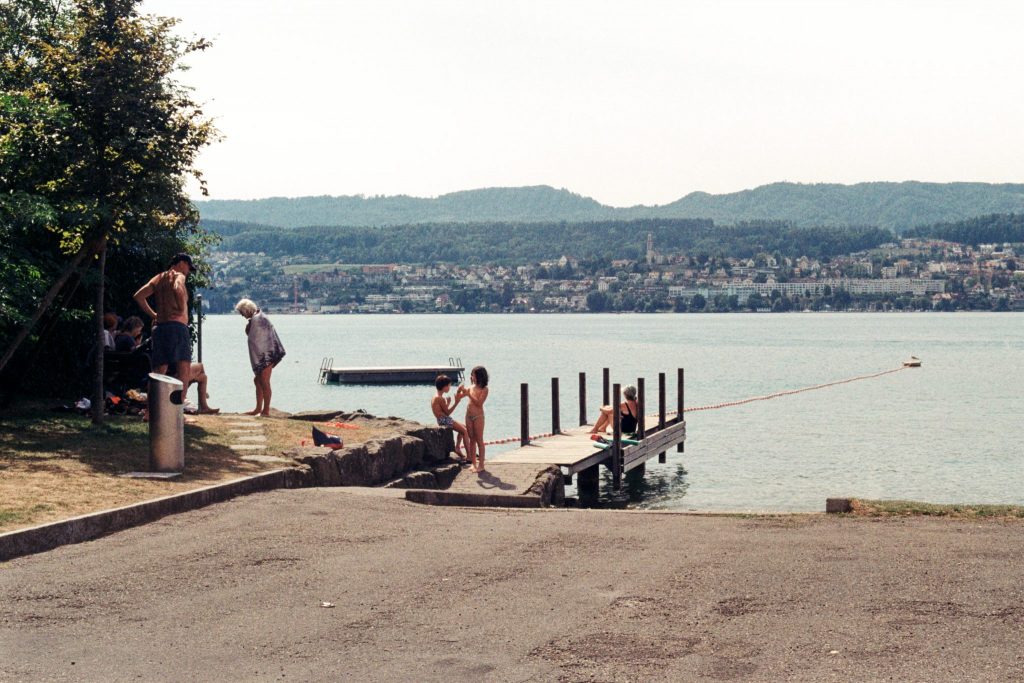
Photo ©Solène Hoffmann
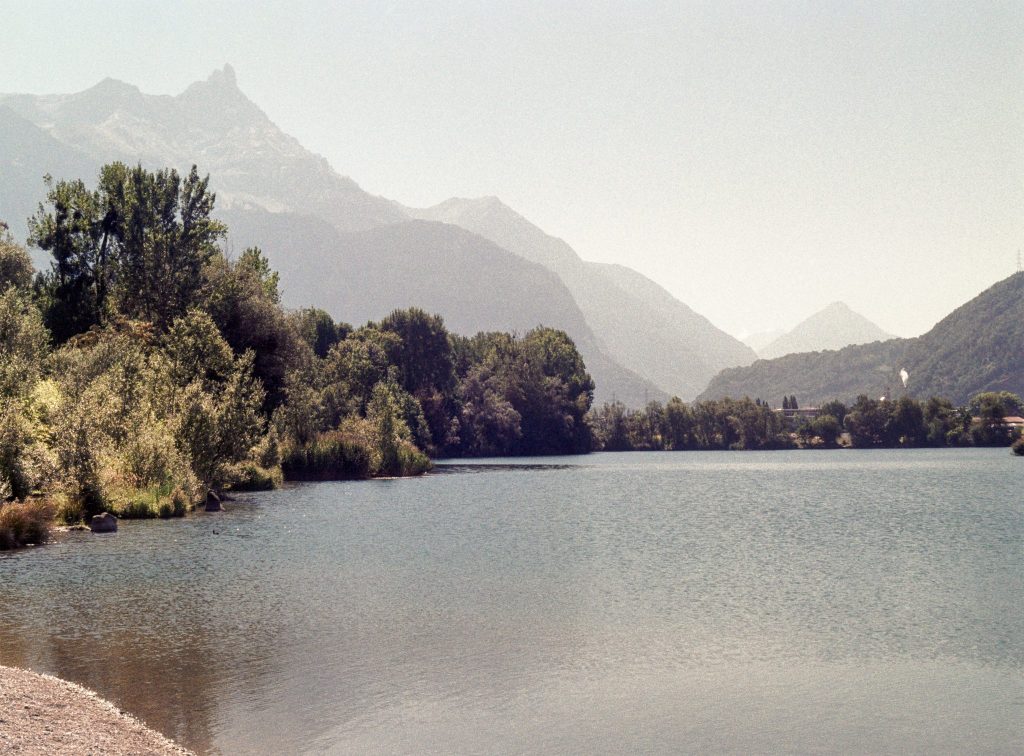
Monthey (VS), Mangettes lake, household and chemical waste, from 1961 to 2000. Photo © Solène Hoffmann
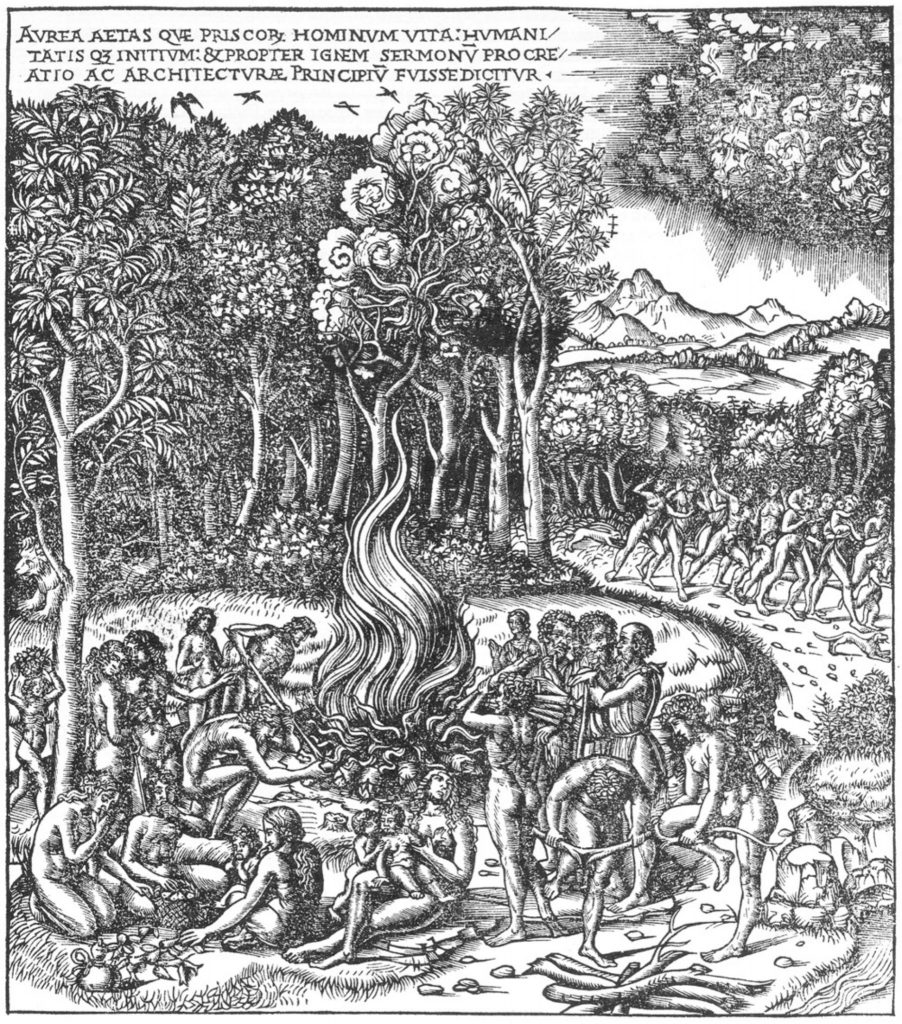
More than 50 years ago Reyner Bahnam noted in his book The architecture of the Well-tempered Environment:
One must observe a fundamental difference between environmental aids of the structural type (including clothes) and those of which the campfire is the archetype. Let the difference be expressed in a form of parable, in which a savage tribe arrives at an evening camp-site and finds it well supplied with fallen timber. Two basic methods of exploiting the environmental potential of that timber exist: either it may be used to construct a wind-break or rain-shed – the structural solution – or it may be used to build a fire – the powered-operated solution. An ideal tribe of noble rationalists would consider the amount of wood available, make an estimate of the probable weather for the night – wet, windy, or cold – and dispose of its timber resources accordingly. A real tribe, being in inheritors of ancestral cultural predispositions, would do nothing of the sort, of course, and would either make fire or build a shelter according to prescribed custom-and that, as will emerge from this study, is what Western, civilized nations still do, in most cases.*
Beyond Banham’s structural and thermal considerations, it is fascinating to note through this naive tale, the inextricable link between the material available to produce a hut and the combustible material to light a fire. It is wood, the same material that is at the origin of classical architecture whose archetype is the hut, but also at the birth of the culture developed for thousands of years around the fire that brings humanity together.
The link that energy sources weave between culture and architecture is not as obvious today as in Banham’s fable, and yet it is indeed through the exploitation of fossil fuels, first coal and then oil, that the modern world and modernity have taken off.
Today, the climate emergency forces society to take measures in favor of an energy transition. Tomorrow, a new world architecture and a new society may emerge from renewable energies.
In your opinion, what image could represent an architecture, a world, a society emancipated from fossil fuels?
To submit your contribution and find instructions, click here.
Curators
Lucile Ado, Oscar Buson (Raum404)
Solène Hoffmann, Cyril Veillon (Archizoom)
Research and Cartography
Lucile Ado, Oscar Buson, Lionel Epiney (Raum404)
Photographies
Solène Hoffmann
Podcasts production
Sébastien Weber
Graphic design
Sophie Wietlisbach
Atelier Dyakova
Photolithography
Leatitia Gendre
Administration
Béatrice Raball
Set-up
Esther Chatelain
Basil Ferrand
Nour Keller
Manuel Rossi
Arno Wüst
Architecture & cinema programming
Romain Barth
Acknowledgments
Alan Defrance
Model workshop
Jong Photography Workshop
Daniel Böni from KEZO, Hinwill
Pool architekten, Zurich
The incineration plants
All the people who participated in the Reyner Banham Story
